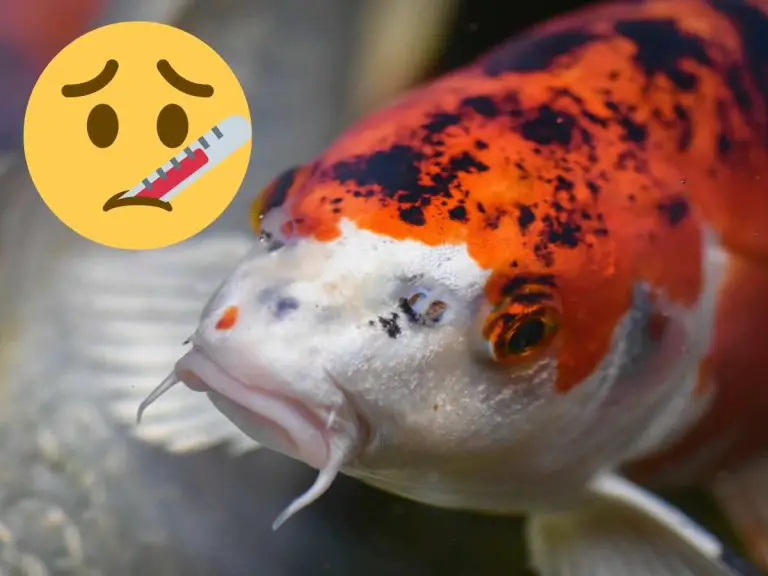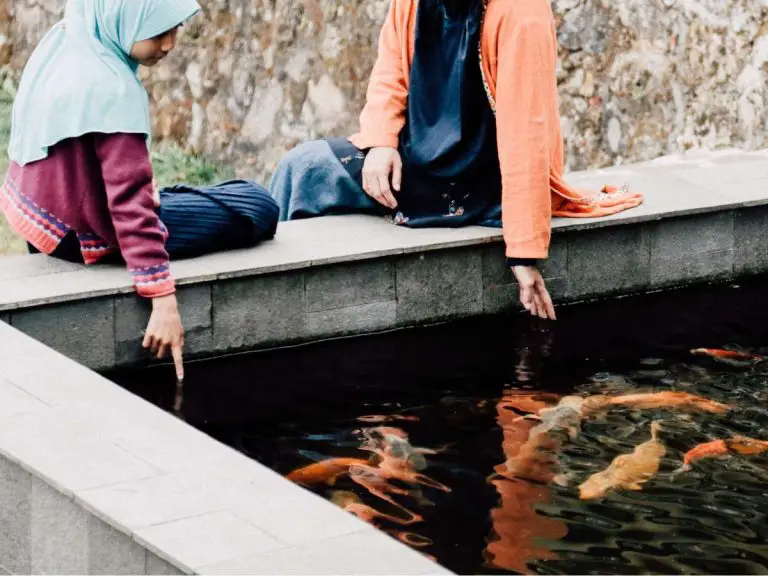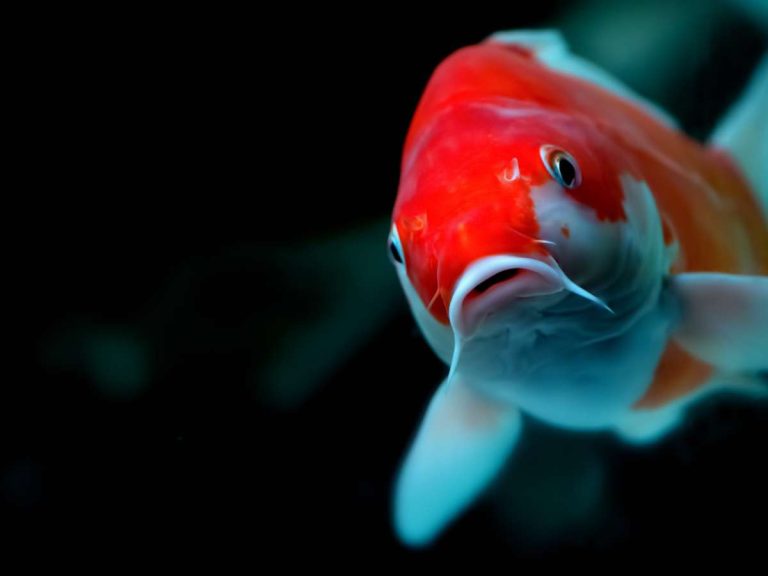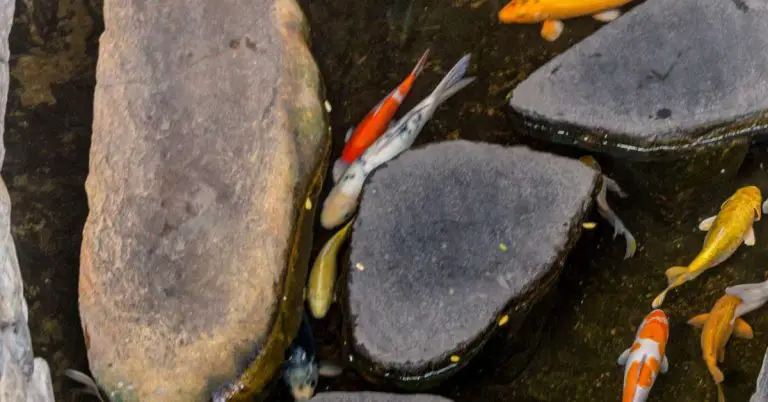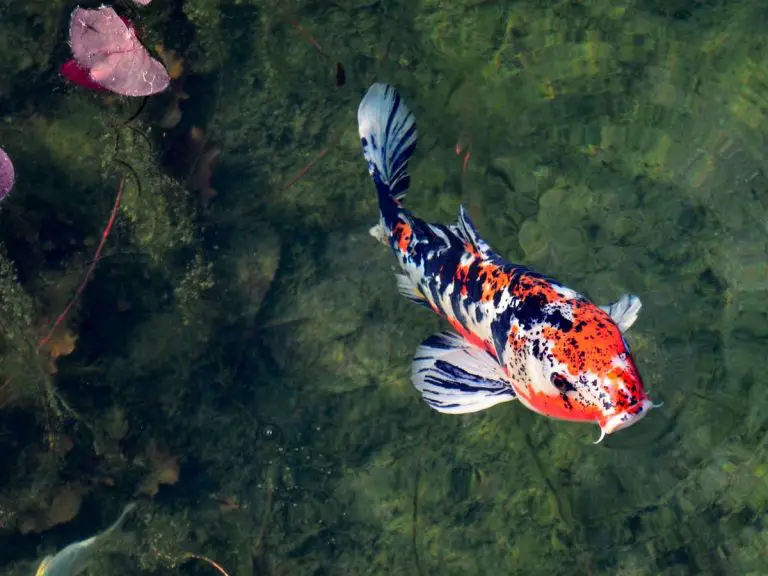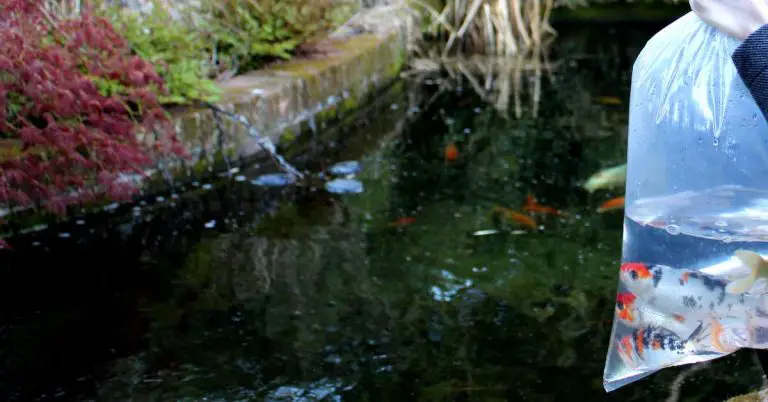Ghost Koi Guide: Essential Care Tips, Feeding Habits & More!
Ghost koi are a special variety of koi fish. While they are hardy and can tolerate a range of conditions, it’s essential to provide them with optimal care to ensure their health and longevity. Proper pond maintenance, a balanced diet, and regular health checks will ensure that your Ghost Koi thrive.
In this guide, we will cover everything from their appearance and size potential to their feeding habits and ideal habitat. You’ll learn about their distinct characteristics that set them apart from other koi breeds. We’ll also provide you with valuable care tips, including optimal water conditions, recommended tank or pond setup, and the best practices for feeding ghost koi.
Ready to become a ghost koi pro? Keep reading to discover everything you need to know about ghost koi – their appearance, traits, and more. We’ll guide you through their care requirements, feeding habits, and creating the perfect habitat for them. So, grab your notebook and get ready to become an expert in ghost koi care. Let’s dive in!
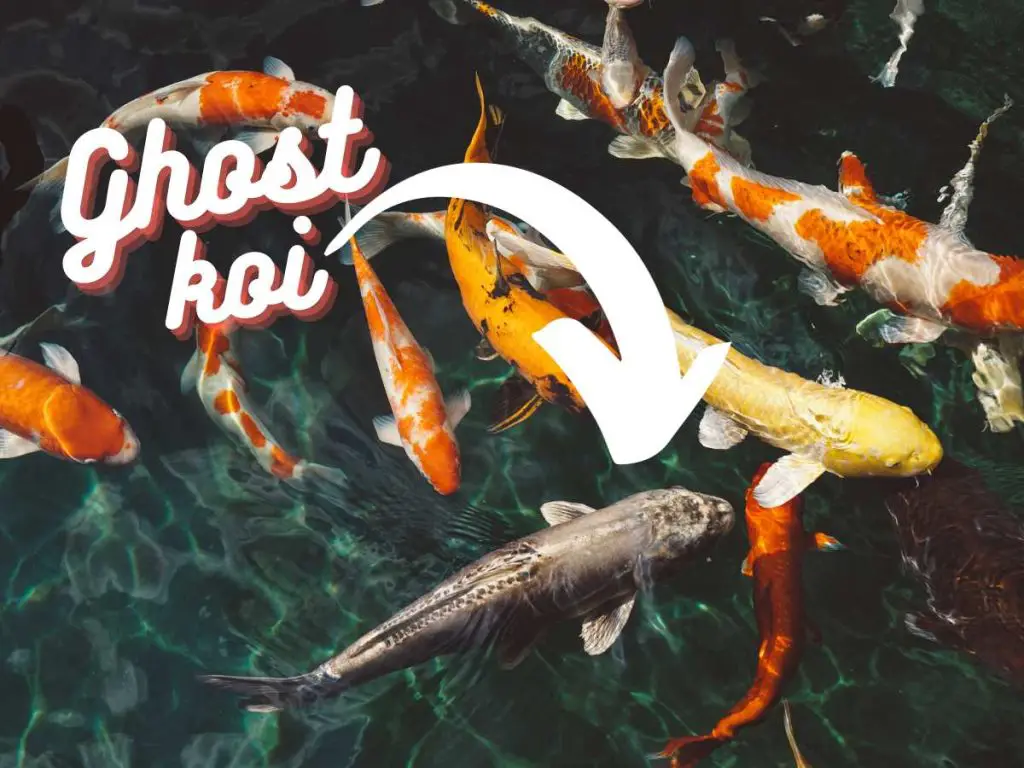
Characteristics of ghost koi
Ghost Koi, often referred to as “Ghost Carp,” are a hybrid variety of koi. They are the result of breeding a wild, metallic-scaled carp with a traditional koi. This breeding gives them their unique appearance, which combines the solid metallic body of the wild carp with the patterns and shapes of traditional koi.
Originating in the UK in the 1980s, Ghost Koi quickly gained popularity due to their hardiness and distinctive appearance. They are not considered “true koi” by purists because of their hybrid nature, but their resilience and beauty have earned them a special place in many ponds and aquariums worldwide.
Ghost koi are known for their unique and captivating appearance. Their translucent scales make them appear ghostly, hence their name. These beautiful fish have a mesmerizing mix of colors, including shades of silver, white, yellow, and black. Their scales create a stunning reflective effect, making them a popular choice among pond owners.
When it comes to growth rate and size potential, ghost koi are impressive. These fish have been known to grow up to 36 inches in length, making them one of the larger varieties of koi. Their fast growth rate sets them apart from other koi breeds, so you can expect to enjoy watching them reach their full potential in a relatively short amount of time.
Ghost koi also come in a variety of color variations and patterns, which adds even more excitement to their overall aesthetic. Some may have black patches on their bodies, while others may exhibit a metallic sheen or unique patterns like patches or spots. Each fish is truly one-of-a-kind, making them a joy to observe and appreciate.
In addition to their captivating appearance, ghost koi possess some unique traits compared to other koi breeds. One such trait is their ability to blend well with their environment. Their translucent scales and muted colors allow them to easily camouflage in their surroundings, making them less vulnerable to predators. This adaptability also makes them a suitable choice for ponds with various types of aquatic vegetation.
Table 1: Overview of Ghost Koi
| Feature | Description |
|---|---|
| Origin | United Kingdom (1980s) |
| Type | Hybrid (Wild metallic-scaled carp x Traditional koi) |
| Appearance | Metallic scales with shimmering appearance; silver or gold body with potential darker patches. |
| Size | Similar to traditional koi, often reaching lengths of 60-70 cm in well-maintained ponds. |
| Lifespan | With proper care, they can live for several decades, similar to other koi varieties. |
| Temperament | Generally peaceful but can be skittish and territorial during breeding seasons. |
| Preferred Habitat | Freshwater ponds with adequate filtration and aeration. |
Temperament and Behavior
Ghost Koi are known for their hardy nature and adaptability. They are generally peaceful fish, making them suitable for communal ponds with other koi varieties and pond-friendly fish. However, like all koi, they can be territorial during breeding seasons.
Ghost Koi are also known to be more skittish than other koi varieties, likely due to their wild carp ancestry. It’s not uncommon for them to dart away when approached or when there’s a sudden movement outside the pond. That said, over time and with regular interaction and feeding, they can become more accustomed to their owners and may even come to the surface to greet them.
Distinctive Features Setting Them Apart
The most distinguishing feature of the Ghost Koi from other koi varieties (like shusui and agasi koi, for example) is its shimmering, metallic scales. These scales often reflect light, giving the fish a ghostly, ethereal appearance, which is how they got their name. Their bodies are typically silver or gold, with patterns that can range from a solid color to ones with patches of darker colors, often resembling the patterns found on traditional koi. The combination of their metallic sheen with these patterns makes each Ghost Koi unique.
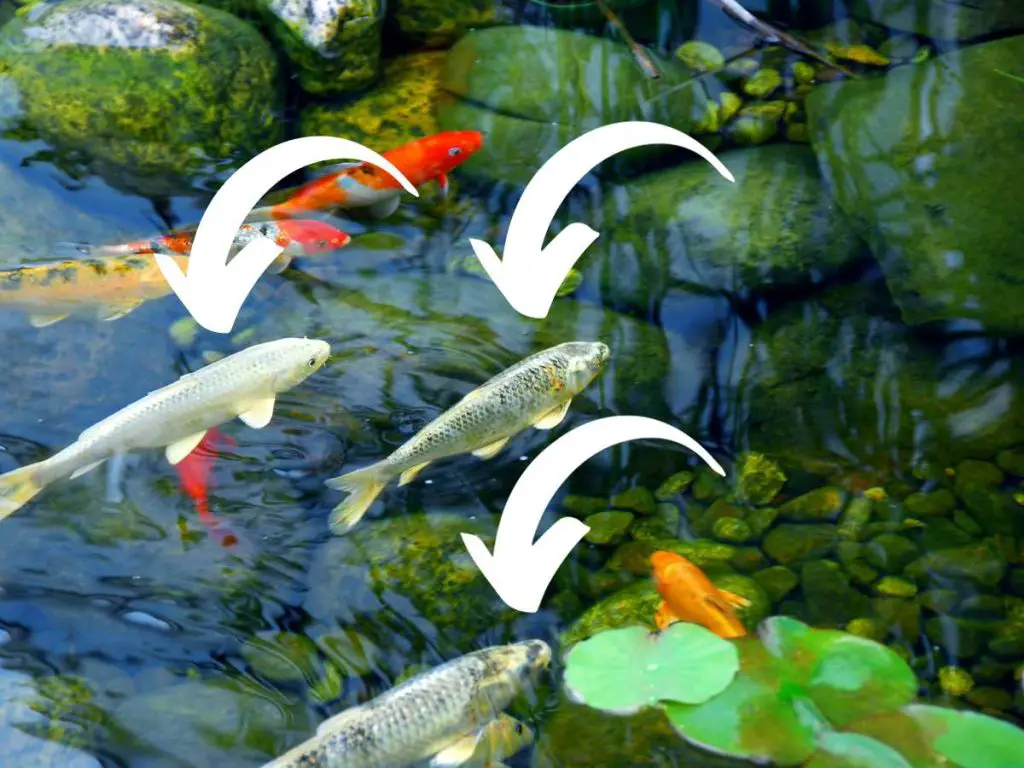
Their bodies are also more streamlined compared to the bulkier bodies of traditional koi, another trait they inherit from their wild carp ancestors.
Table 2: Care and Maintenance of Ghost Koi
| Aspect | Recommendations |
|---|---|
| Diet | High-quality koi pellets, supplemented with fresh fruits, vegetables, and occasional live foods. |
| Water Quality | Regularly test for pH, ammonia, nitrites, and nitrates. Maintain a pH level between 7.0 and 8.5. |
| Temperature | Prefer temperatures between 15°C to 25°C (59°F to 77°F). |
| Pond Size | Minimum of 1,000 gallons for the first koi, with an additional 250 gallons for each additional koi. |
| Shelter | Provide shaded areas in the pond to protect from direct sunlight and predators. |
| Health Checks | Regularly check for signs of diseases or parasites, and consult a vet if any abnormalities arise. |
| Pond Maintenance | Regular cleaning, filtration, and aeration are essential. Remove debris and check water quality. |
Care tips for ghost koi
Giving your ghost koi the right water conditions is crucial for their overall health and well-being. These fish prefer clean and well-oxygenated water. Keeping the water in their habitat clear and free from pollutants is essential.
Additionally, maintaining a well-balanced pH level is important to ensure their proper growth and development.
Temperature requirements
Ghost koi are most comfortable in water temperatures between 68 to 77 degrees Fahrenheit. Sudden and extreme temperature fluctuations can stress them out and make them more susceptible to diseases. It’s important to use a reliable thermometer and regularly monitor the water temperature. Installing a heater can help regulate the temperature during colder months or in climates where the water may become too cold.
Water quality maintenance
Regular water quality maintenance is essential for the health of your ghost koi. Be sure to regularly test the water for ammonia, nitrite, nitrate, and pH levels. High levels of ammonia or nitrite can be harmful to your fish and lead to illness or even death. Conducting regular water changes and using filtration equipment can help maintain optimal water quality for your ghost koi.
Filtration systems and equipment
Investing in a good filtration system is crucial for maintaining a healthy environment for your ghost koi. A high-quality filter can help remove debris, excess fish waste, and harmful chemicals from the water. There are various types of filtration systems available, such as biological filters, mechanical filters, and UV sterilizers. Choose a system that best suits your specific needs and the size of your koi habitat.
Importance of regular water testing
Regularly testing the water parameters is essential for keeping your ghost koi healthy. Testing kits are readily available and easy to use. Monitoring parameters such as ammonia, nitrite, nitrate, and pH levels can help you detect any issues early on and take appropriate actions to prevent illnesses or fish stress. It’s recommended to test the water weekly or bi-weekly to ensure optimal conditions.
Suitable tank or pond size
When it comes to providing ample space for your ghost koi, bigger is always better. These fish can grow quite large, so it’s important to provide a spacious environment for them to thrive. The size of your tank or pond will depend on the number of koi you plan to keep. As a general guideline, each koi should have a minimum of 250 gallons of water. However, if you can provide more space, your ghost koi will be happier and healthier (especially since ghost koi can grow to be quite large at up to 24 inches of more).
Recommended tank or pond setup
Creating a suitable tank or pond setup is crucial for the well-being of your ghost koi. Make sure the tank or pond is properly cleaned and prepared before introducing your fish. Provide hiding spots and places for your koi to explore, such as caves or structures. Lush vegetation and floating plants can also provide shelter and contribute to water quality by absorbing excess nutrients. Additionally, ensure that there is adequate aeration and circulation in the water to maintain oxygen levels and overall water quality.
Best practices for feeding ghost koi
Ghost koi have specific dietary needs to ensure their health and vitality. They require a well-balanced diet that consists of both protein and plant matter. This combination provides the necessary nutrients to support their growth and overall well-being. It is essential to provide a mixture of both animal-based and plant-based foods.
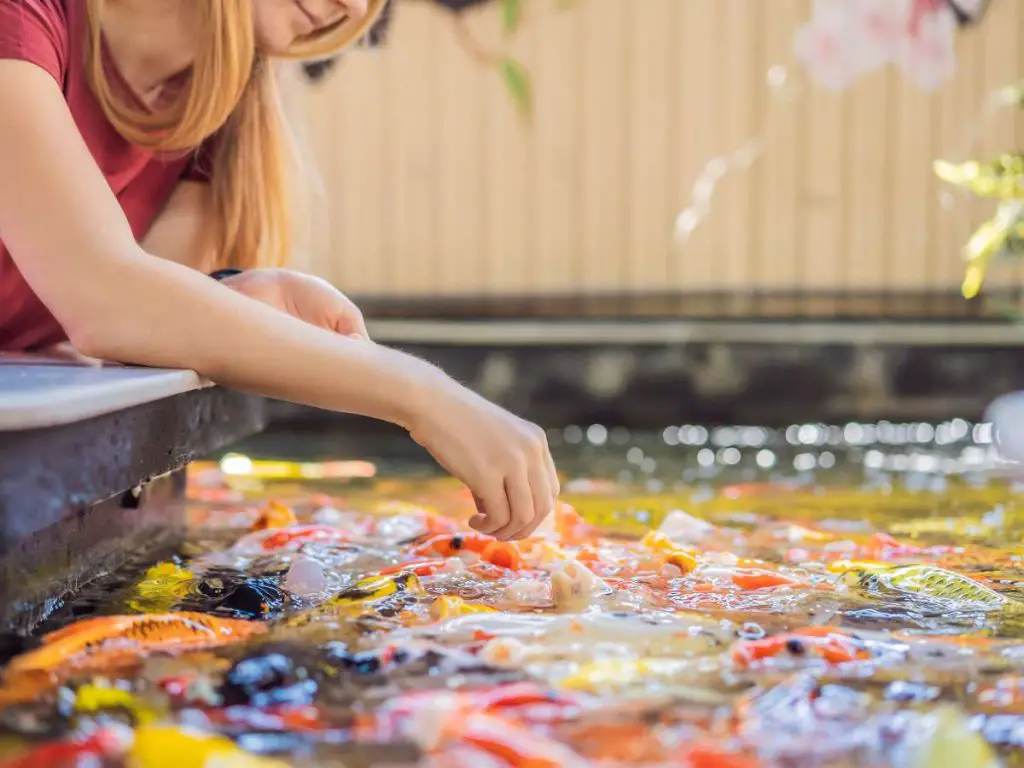
When it comes to feeding your ghost koi, there are various options to choose from. High-quality koi pellets are a popular and convenient choice. These pellets are specially formulated to meet the nutritional requirements of koi fish. Additionally, you can supplement their diet with live or frozen foods such as brine shrimp, bloodworms, daphnia, and chopped earthworms (or even make your own homemade koi food!). These protein-rich foods provide a nice treat and help promote natural foraging behaviors.
Another option is to incorporate fresh fruits and vegetables into their diet. Sliced peas, lettuce, watermelon, and oranges are tasty treats that can provide additional vitamins and minerals. Just be sure to cut them into appropriate sizes for easy consumption.
Feeding frequency and portion sizes
Feeding your ghost koi the right amount is crucial for their health. It is recommended to feed them small portions multiple times a day rather than one large meal. This approach mimics their natural feeding habits and prevents overeating, which can lead to health problems.
A general guideline is to feed your ghost koi enough food that they can consume within 5 minutes. If there is excess food after this time, it is a sign that you have overfed them. Adjust the portion sizes accordingly to avoid waste and maintain water quality.
Remember that overfeeding can have negative consequences for your ghost koi, including poor water quality, obesity, and digestive issues. It is crucial to resist the temptation to overfeed them, even if they appear eager for more food.
On the other hand, underfeeding can lead to malnutrition and stunted growth. It is important to find the right balance and provide enough food to sustain their energy and growth requirements without overdoing it.
Supplemental feeding options
In addition to their regular diet, you can introduce supplemental feeding options to enhance their nutrition and overall health. Vitamin-rich foods like spirulina, wheat germ, and kelp flakes can provide added benefits and support immune function.
However, it is important to use these supplemental foods in moderation and not rely on them as the sole source of nutrition. They should complement a well-rounded diet rather than replace it entirely.
Monitoring and adjusting feeding habits
Be observant of your ghost koi’s behavior and adjust their feeding habits accordingly. If you notice that they are constantly begging for food or exhibiting lethargy, it may be a sign of overfeeding or inadequate nutrition. Similarly, if they are not showing interest in food or appear thin, it may indicate underfeeding.
Regular monitoring of their weight, appearance, and activity levels can help you fine-tune their feeding routine. Remember, every fish is unique, and it may take some trial and error to find the perfect balance for your ghost koi’s dietary needs.
Creating the ideal habitat for ghost koi
When it comes to creating the ideal habitat for your ghost koi, location is key. You’ll want to choose a spot that offers some shade throughout the day, as direct sunlight can overheat the water and stress out your fish. Look for an area that has a good balance of sun and shade, or consider using aquatic plants or structures to provide some cover.
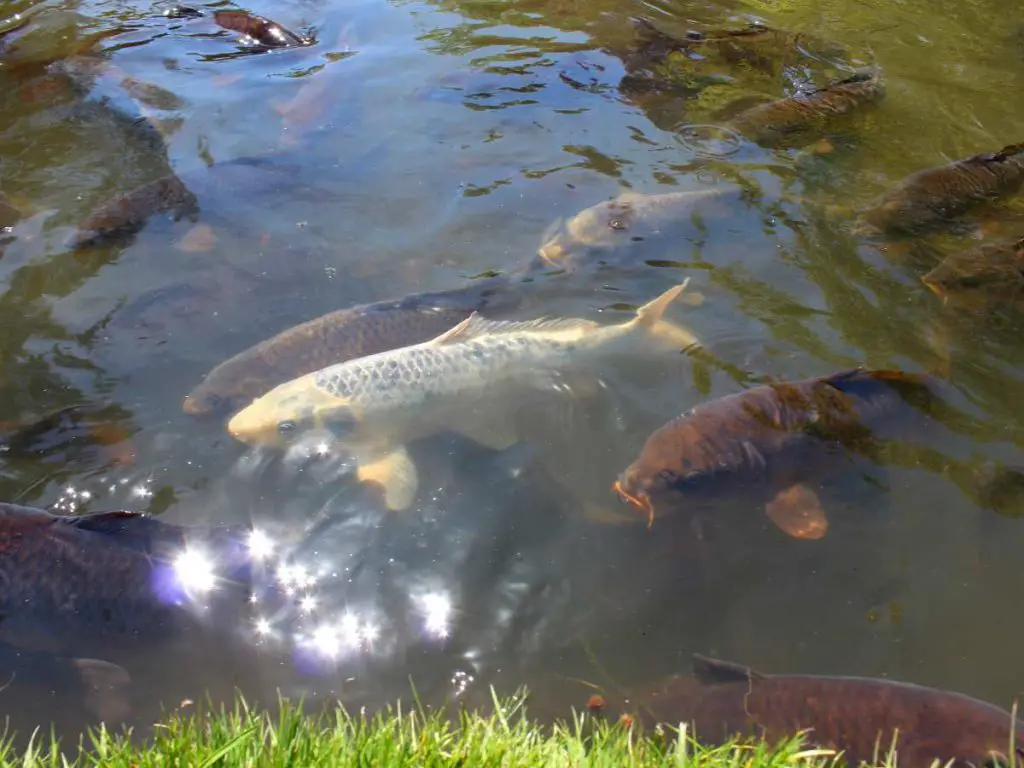
Ideal water depth and dimensions
Ghost koi thrive in ponds or tanks that are at least three to four feet deep. This allows them enough space to swim freely and also provides a buffer against extreme temperature fluctuations.
Remember, too, that deeper ponds can provide more stable temperatures, especially in areas with extreme seasonal temperature fluctuations.
In terms of dimensions, a larger pond or tank is always better, as it gives your fish more room to explore and reduces the risk of overcrowding. Aim for a minimum of 1,000 gallons for each ghost koi in your setup.
Considerations for outdoor or indoor setups
When deciding whether to keep your ghost koi in an outdoor pond or an indoor tank, there are a few things to consider.
Outdoor setups provide a more natural environment with access to sunlight and a wide range of plants and organisms. However, they are also exposed to the elements, which means you’ll need to provide adequate filtration and be prepared for seasonal changes. They can also attract predators like birds or raccoons, so some form of protection (like netting) might be necessary.
Indoor setups, on the other hand, offer more control over the environment but may require additional heating or lighting systems.
Optimal pond landscaping and hiding spots
Ghost koi appreciate a well-designed pond that mimics their natural habitat. Incorporating various landscaping elements, such as rocks, gravel, and aquatic plants, can create hiding spots and provide a sense of security for your fish. These elements also contribute to the overall aesthetics of your pond, making it a more visually appealing feature in your garden.
Lush vegetation options for natural filtration
One of the keys to maintaining good water quality in your ghost koi habitat is natural filtration. Lush vegetation, such as water lilies, water hyacinths, and hornwort, can help absorb excess nutrients and provide oxygen to the water. These plants not only add beauty to your pond but also play a crucial role in maintaining a healthy and balanced ecosystem for your fish.
Additional design elements for a comfortable environment
In addition to landscaping and vegetation, there are other design elements you can incorporate to make your ghost koi’s habitat more comfortable. Consider adding a waterfall or fountain feature to provide aeration and create a soothing environment. The sound of running water can also help mask any external noises and reduce stress for your fish. Don’t forget to include suitable lighting options for both day and night, as koi appreciate a natural day-night cycle.
Breeding ghost koi: A comprehensive guide
To successfully breed ghost koi, you need to ensure certain prerequisites are met. First and foremost, you’ll need a healthy male and female pair of ghost koi that are at least two or three years old. This is because younger koi may not be sexually mature or ready for breeding.
Ghost koi, like other koi breeds, are egg-layers. The female ghost koi will release eggs into the water, which the male will then fertilize with his milt. It’s important to note that koi breeding can be a complex process and may not always be successful, so patience and observation are key.
Selecting compatible breeding pairs
When selecting breeding pairs, it is important to choose koi with compatible genetics, as this will increase the likelihood of successful offspring. Look for koi with similar body shapes and colors, as well as good overall health. You can consult with a reputable koi breeder or pond expert for guidance on selecting compatible breeding pairs.
Breeding setup and tank preparation
Before breeding, you’ll need to prepare a breeding setup. This typically involves setting up a separate breeding tank or pond with appropriate conditions. The tank should have a depth of at least 3 feet to provide the necessary space for the koi to spawn and protect their eggs.
Monitoring and caring for breeding eggs
Once the breeding has taken place, it’s important to monitor the eggs closely. Koi eggs are sticky and will attach to surfaces such as vegetation or rocks. The eggs should be left undisturbed, as the parents will provide some care by fanning water over them to provide oxygen. Regularly check the water quality to ensure optimal conditions for egg development.
Raising and caring for fry (baby koi)
After a few days, the eggs will hatch into fry, which are tiny and vulnerable. At this stage, it’s crucial to provide a suitable environment for their growth. You may need to transfer the fry to a separate rearing tank to protect them from predation by adult koi or other fish. The water temperature should be maintained around 75-80°F, and proper filtration and feeding schedules should be followed to support their growth.
Additional considerations for commercial breeding
If you’re considering commercial breeding of ghost koi, there are additional factors to consider. It’s essential to ensure you have enough space and resources to accommodate a larger number of koi. You may also need to establish a system for identifying and culling weak or undesirable offspring. Consulting with experienced koi breeders or attending workshops can provide valuable insights into the commercial breeding process.
Common ghost koi challenges (and how to overcome them)
Keeping your ghost koi healthy and disease-free is crucial for their overall well-being. Common diseases that can affect these fish include bacterial infections, parasitic infestations, and fungal diseases. These can manifest as visible symptoms such as discolored patches on the skin, fin rot, or abnormal behavior.
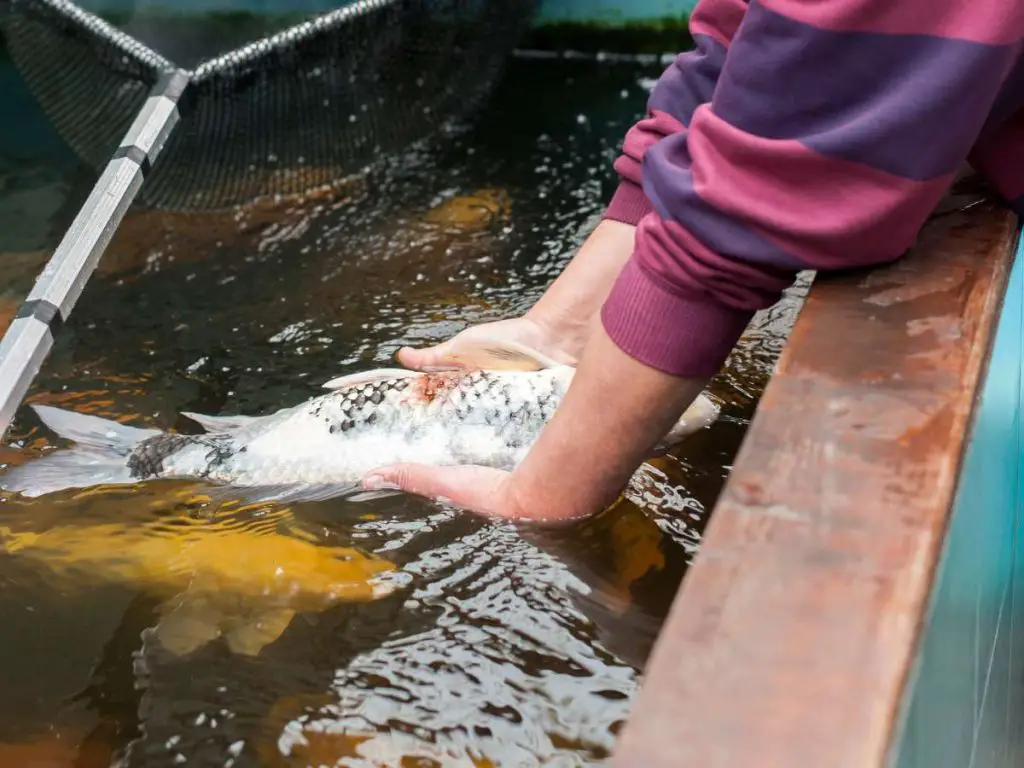
When you notice any signs of illness, it’s important to act quickly. Quarantine the affected fish to prevent the spread of the disease to others and consult a fish veterinarian or aquatic expert for proper diagnosis.
Dealing with parasites in ghost koi
Parasites can be a pesky problem for ghost koi. Common parasites that may affect them include flukes, anchor worms, and ich. These parasites can cause irritation, rubbing against objects, and even weight loss.
To address parasites, treatment options include medicated baths, dips, or adding appropriate medications to the water. It’s crucial to follow the instructions of the chosen treatment method and closely monitor the fish for any signs of improvement or worsening.
Handling stress and aggressive behavior
Stress and aggression can have a negative impact on the health of your ghost koi. Stress can occur due to factors such as overcrowding, poor water quality, excessive handling, or sudden changes in their environment.
If you notice signs of stress or aggression, such as fish chasing each other or hiding in corners, it’s important to address the underlying cause. Ensure proper water quality, provide ample hiding spots and visual barriers, and avoid overcrowding. Additionally, observe potential aggressors and consider separating or rehoming them if necessary.
Addressing water quality issues
Water quality is crucial for the health and well-being of your ghost koi. Poor water quality can lead to various health problems and even fatalities. Common water quality issues include high levels of ammonia, nitrites, and nitrates, as well as imbalances in pH and water hardness.
To maintain optimal water quality, regular monitoring and testing are essential. Regular water changes, use of appropriate filtration systems, and the addition of beneficial bacteria can help prevent or mitigate water quality issues. Always aim for stable and balanced water parameters that suit the specific needs of ghost koi.
Managing unwanted breeding or overpopulation
If you have a mixed population of male and female ghost koi and do not want them to breed, it’s essential to take preventive measures. Separating males and females into different tanks or ponds can help prevent unwanted breeding. Additionally, removing any spawning materials and closely monitoring the fish for signs of breeding behavior can reduce the chances of accidental reproduction.
If you do encounter an unexpected overpopulation of ghost koi, it may be necessary to consider options such as selling or rehoming some of the fish or expanding their habitat to accommodate the increased numbers. Always ensure that the new owners can provide appropriate care for the fish.
Conclusion
Well, there you have it, my friends – a comprehensive guide on how to care for ghost koi. We’ve covered everything from their unique characteristics to their feeding habits, creating the ideal habitat, breeding, and troubleshooting common challenges. Let’s quickly recap the main points:
- Ghost koi are a unique variety of koi fish with distinct characteristics, including their appearance, growth rate, color variations, and traits compared to other koi breeds.
- Proper care for ghost koi involves maintaining optimal water conditions, including temperature, water quality, and regular testing.
- Feeding ghost koi requires understanding their dietary requirements, portion sizes, and avoiding overfeeding or underfeeding.
- Creating the ideal habitat involves choosing the right location, pond or tank size, design elements, and vegetation options for natural filtration.
- Breeding ghost koi requires understanding their reproductive behavior, selecting compatible breeding pairs, and providing suitable tank setup for monitoring and raising fry.
- Common challenges include disease identification, parasite control, managing stress and water quality issues, and addressing unwanted breeding or overpopulation.
With these key facts in mind, you have the knowledge and tools to provide the best care for ghost koi. So go forth, my fellow pond enthusiasts, and create a haven for these captivating creatures. Remember, a well-cared-for ghost koi will reward you with its beauty and grace for years to come. Happy pond-keeping!
Related Questions
Can ghost koi be kept in a pond with other types of fish?
Yes, ghost koi can usually be kept in ponds with other fish species. However, it’s important to consider the size and temperament of the other fish. Ghost koi have a calm and gentle temperament, so they generally get along well with most pond fish. Just make sure the pond is spacious enough for all the fish to swim and have their own territory.
Can ghost koi live in an indoor aquarium instead of a pond?
While ghost koi are primarily suited for outdoor ponds due to their large size potential, they can also be kept in indoor aquariums if the tank is adequately sized. However, keep in mind that ghost koi require plenty of swimming space. A tank size of at least 100 gallons is recommended for a single ghost koi, and larger tanks should be considered for multiple koi or if you want them to reach their maximum growth potential.

